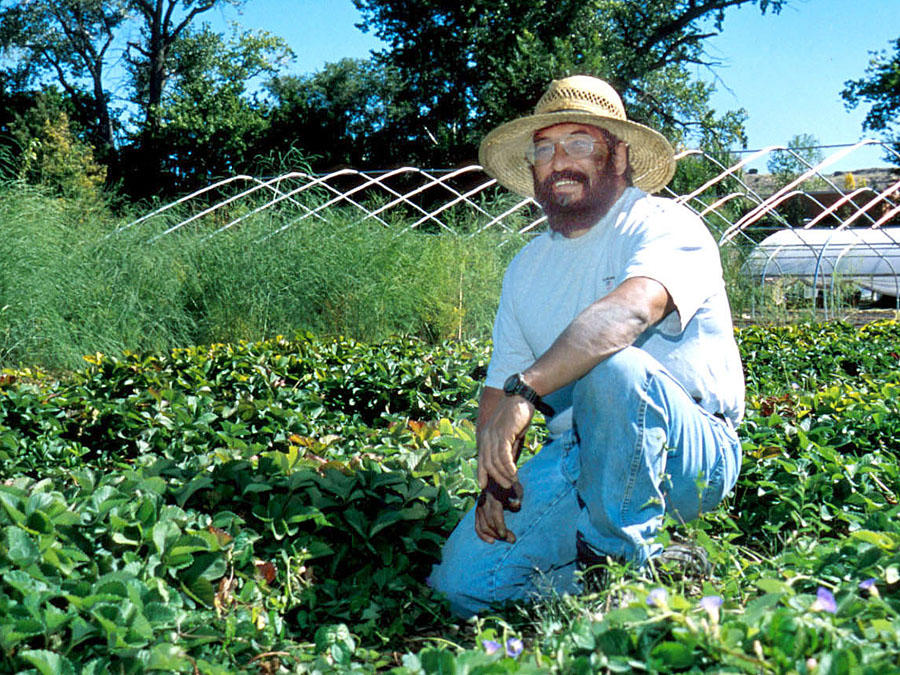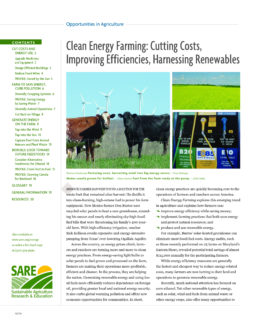Perched at the edge of the Sonoran desert, Don Bustos’ family farm has always been endowed with ample sunshine and daylight. However, the New Mexico grower had long been bedeviled by cool temperatures that limit the growing season to 4–5 months. With rising costs hampering his ability to support his family in the off-season, Bustos decided to tap nature’s own unlimited and free energy source: the sun.
Heating a greenhouse with solar power was a logical choice for Bustos, who incorporates principles of sustainability throughout his three and a half acres of certified organic land in the small town of Santa Cruz. “I wanted to be more light on the earth and use energy more consciously,” said Bustos, who farms more than 72 varieties of horticultural crops, including blackberries, raspberries, strawberries, tomatoes, squash, peppers and braising greens.

Bustos also had a powerful economic incentive: One winter, he received a $700 gas bill for one month’s heat for the greenhouse. After researching solar options, Bustos eventually decided to install a root-zone thermal heating system, partially funded by a SARE grant.
To minimize costs, Bustos picked up recycled solar collectors from a building demolition site. The panels sit 12 feet from the greenhouse, facing due south, and at a 45-degree angle to maximize exposure to the winter sun. The panels are able to generate enough heat to raise a glycol/water mix to approximately 200 degrees. This heating fluid runs through a closed-loop system of copper tubing to an underground tank just a few feet away from the panels. The tubing is buried to a depth of seven feet to take advantage of the earth’s natural insulating properties. A heat exchanger raises the tank’s water temperature to 180 degrees. The water then flows through the plastic tubes under the greenhouse’s beds, raising root-zone soil temperatures to a comfortable 48–52 degrees.
The first season was extremely successful, cutting annual heating costs from $2,000 to zero, and increasing yields 30–40 percent above that from the standard cold frame. The only ongoing cost related to the solar heating system is a $5 monthly electricity charge for the two pumps that circulate the heated water from the underground tank through the greenhouse.
Thanks to the solar-heated system, Bustos now can produce a steady supply of salad greens, arugula, Swiss chard, kale, carrots and radishes from October to March, even when outside temperatures drop below freezing. During the most frigid nights, Bustos blankets the beds with sheets of polyester, creating heat-retaining igloos. The system even works in reverse: When the soil is too hot during summer, Bustos runs the pumps to circulate water, now cooled by the geothermal properties of underground storage.
Bustos has a solid, local market for his winter crop thanks to a strong collaboration among the New Mexico Department of Agriculture, private citizens and farmers that permits the Santa Fe school district to buy directly from growers. In keeping with his energy-conscious philosophy, Bustos markets his food year round within 28 miles of his farm. Bustos is also investigating how to get entirely off the grid by increasing energy efficiency, expanding the solar panels to the house and filling his tractors with biodiesel.
For Bustos, the solar greenhouse and the added economic benefit it provides fit perfectly with his philosophy of keeping the land in the family. “We wanted the ability to retain our land for future generations and not have to develop it into houses,” said Bustos, whose family has farmed the same ground for 400 years. “We wanted to stay close to what we’ve done. Preserving our land ties into the spirituality of how we grew up.”
